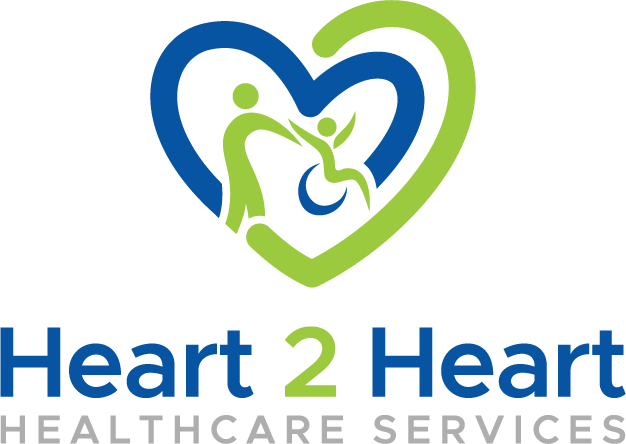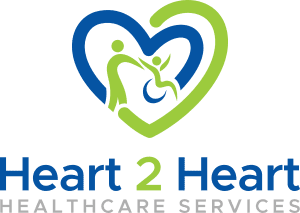
Heart2Heart is the go-to homecare provider in DFW for stroke recovery. We’re all about helping your loved one overcome the everyday challenges they may face during their stroke recovery journey. Our dedicated team of medical professionals and caregivers is committed to providing personalized care and support to ensure a safe and comfortable home setting.
Furthermore, we are committed to educating the community on different topics every week. Check out our latest blog on stroke recovery to learn more. If you find this information helpful, please consider sharing to help spread the knowledge.
If you or a loved one need assistance, please feel free to contact us at 214-799-1956 to schedule a free assessment.
What is stroke recovery?
Stroke recovery refers to the process of regaining physical and cognitive abilities after experiencing a stroke. It involves relearning skills that may have been affected, such as walking, talking, and performing daily tasks. Recovery can vary widely from person to person and is influenced by factors like the severity of the stroke, the individual’s overall health, and the type of rehabilitation received. Early stages of recovery focus on stabilizing the patient’s condition and preventing further complications, while later stages often involve intensive therapy to help regain lost function. Understanding the stages of stroke recovery can provide insight into what to expect and how to support the recovery process.

Acute stage of stroke recovery
The acute stage of stroke recovery is the initial phase after a stroke occurs. During this stage, the focus is on stabilizing the patient’s condition and preventing further damage. Some key aspects of the acute stage of stroke recovery include:
- Emergency Care:
- The immediate priority is to ensure the patient receives timely and appropriate medical treatment to minimize the impact of the stroke.
- Medical Monitoring:
- Patients are closely monitored for any complications that may arise, such as blood clots or infections.
- Rehabilitation Assessment:
- Although rehabilitation does not typically begin during the acute stage, healthcare professionals may start assessing the patient’s physical and cognitive abilities to plan for future rehabilitation needs.
- Education and Support:
- Patients and their families will receive information and support regarding the patient’s condition, potential complications, and the next steps in the recovery process.
During the acute stage, the primary goal is to stabilize the patient and lay the groundwork for the subsequent phases of stroke recovery.
Sub-acute stage of stroke recovery
During the sub-acute stage of stroke recovery, which occurs around 2 to 6 weeks after the stroke, the focus is on rehabilitation. This stage is crucial for regaining strength, relearning skills, and making adjustments for the changes caused by the stroke. The main goals include improving mobility, assisting with activities of daily living, and providing emotional support for the patient and their family. Physical therapy, occupational therapy, and speech therapy are commonly used during this stage to help the patient regain function and independence. The patient may also receive education on stroke prevention and lifestyle changes to reduce the risk of another stroke.
Chronic stage of stroke recovery
In the chronic stage of stroke recovery, the focus is on long-term rehabilitation and management of any lingering effects of the stroke. During this stage, the individual continues to work on regaining strength, mobility, and independence. It’s also a time for ongoing therapy and support to help the person adjust to any permanent changes caused by the stroke. Physical therapy, occupational therapy, and speech therapy may still be part of the rehabilitation plan, along with continued medical monitoring to prevent complications. Emphasis is placed on improving overall quality of life and finding ways to adapt to any lasting challenges.
Rehabilitation therapies
Rehabilitation therapies are a crucial part of stroke recovery. They help in regaining lost skills and improving independence. Some common therapies include physical therapy, occupational therapy, and speech therapy. These therapies are designed to help stroke survivors regain strength, improve motor skills, and relearn everyday tasks like walking, dressing, and communicating. The duration and intensity of rehabilitation therapies may vary depending on the individual’s condition and progress.
Physical therapy
Physical therapy plays a crucial role in stroke recovery by helping patients regain strength, mobility, and independence. It involves exercises and activities designed to improve muscle control, coordination, and balance. Physical therapists work with stroke survivors to develop personalized treatment plans to address their specific needs and goals. Through targeted rehabilitation, patients can make significant progress in their recovery, regain confidence, and enhance their overall quality of life.
Occupational therapy
Occupational therapy plays a key role in stroke recovery by helping patients regain independence in daily activities such as dressing, bathing, and cooking. Occupational therapists work closely with stroke survivors to develop personalized strategies and exercises to improve motor skills and cognitive abilities. They also assist in adapting the home environment to make it safer and more accessible for the patient. Additionally, occupational therapy aims to enhance the patient’s mental and emotional well-being by providing support and motivation throughout the recovery process.
Speech and language therapy
After experiencing a stroke, speech and language therapy can be beneficial for improving communication skills and aiding in the recovery process. This type of therapy focuses on exercises and techniques to help individuals regain speech and language abilities. It helps improve:
- Articulation and pronunciation
- Comprehension and expression of language
- Vocal strength and control
- Swallowing function
Speech and language therapy also involves working with a speech therapist who will tailor the exercises to your specific needs and track your progress over time.
Emotional support and counseling
Emotional support and counseling play a crucial role in the recovery process after a stroke. It is important for stroke survivors to have access to support from mental health professionals who can help them process and cope with the emotional challenges that may arise. Counseling can also provide strategies for managing anxiety, depression, and other emotional difficulties that may occur during the recovery period. Additionally, having a strong support system of friends and family members can greatly contribute to a stroke survivor’s emotional well-being.
Conclusion and hope for recovery
After experiencing a stroke, it’s essential to remain optimistic about the recovery process. Many individuals have seen significant improvements in their condition by following through with rehabilitation exercises and maintaining a positive mindset. It’s important to remember that recovery is a gradual process, and every individual’s journey is unique. With the right support, determination, and dedication to therapy, there is hope for continued progress in stroke recovery.

